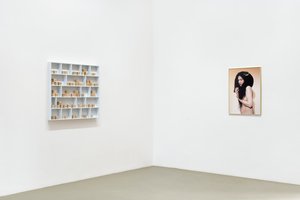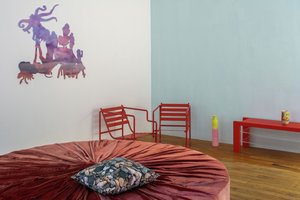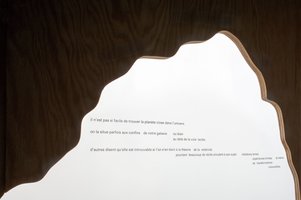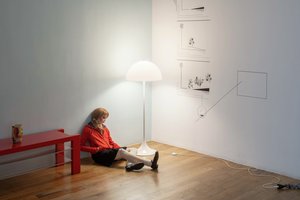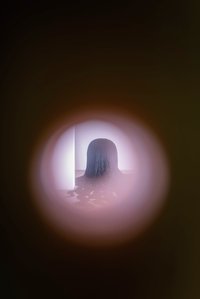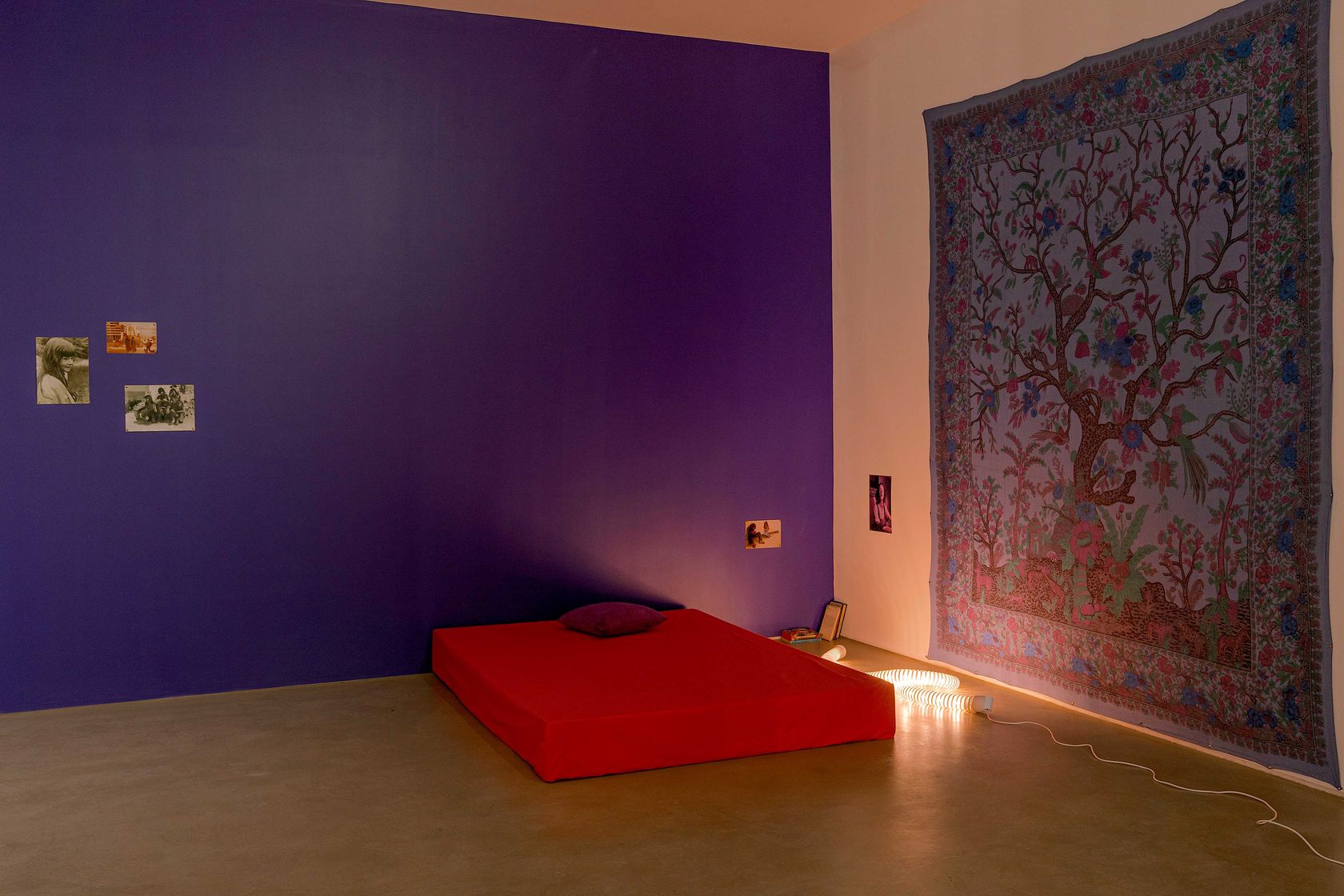Galerie Chantal Crousel is delighted to announce the collaboration with Dominique Gonzalez-Foerster. For her first solo exhibition at the gallery, the artist presents la chambre humaine & la planète close. An exhibition part of a cycle of three “visions”: the first, Volcanic Excursion (A Vision), was shown at the Secession (Vienna, Austria) in the summer of 2021 and the third one will take place at the Serpentine (London, UK) in the spring of 2022.
la chambre humaine [the human room]
With its round bed and pale blue monochrome “bay window”, la chambre humaine reveals a space of sleep and dreams, a sort of “night workshop”, a vital place of rumination and artistic epiphany. A set of hours, between two chunks of sleep, where fertile concerns, attachments and apparitions are formed. A room belonging to a lineage of “rooms” imagined by the artist since the late 90s, Nos années 70 (room) (1992), RWF (room) (1993), Une chambre en ville (1996)... Apparitions and visions, friends and friendships exist through works and collaborations of various formats.
la planète close [the closed planet]
it’s not easy to find the closed planet in the universe. Sometimes, it’s at the edge of our galaxy or well beyond the milky way […]. Leading to the “vision”, these few lines could become a book... or dream of becoming a book. The “visions” are nocturnal works that appear between sleep and dreams, seeking to exist in another state and adopting multiple forms. A crowd of friends and inspirers, both human and non-human, apparitions before a birthing volcano. A set of rings and ropes forming a network of astrocytes and neurons. A gigantic head of hair that spreads out on the ground with a mysterious smell...
la bibliothèque des cubes en bois [the library of wooden blocks]
Both work of art and working-library, this is an attempt to associate, visualize and materialize heterogeneous contents in the shape of wooden cubes. On each side is written a film, a place, a book, a date, a song, a historical event, a name...
les gorgones [the gorgons]
The three gorgons shown are the latest in a long series of apparitions begun in 2012 after Lola Montez, Louis II of Bavaria, Marilyn Monroe, Edgar Allan Poe, Emily Brontë, Fitzcarraldo, Gustav Von Aschenbach... They manifest a set of questions revolving around photography, performance, the body as artistic medium, the reinvention of self and the play of identities, following the footsteps of Castiglione, Casati, or Claude Cahun. “[…] I really think these characters work on the edge of what a work to art is. They’re an attempt to get inside the work and be the work. Before they appear, the public is forewarned by a time and place, but there’s always something mysterious and not necessarily predetermined. […] In my view, this resonates completely with our actual identities, which are characterized by fragmentation and displacement: having this conception of a work that cannot be apprehended just like that, neither in time, nor in space, because at no point does it exist in one piece, but always fragmented.”
—
la chambre humaine [the human room], 2021
Mixed media
With works by Saâdane Afif, BLESS, Cecilia Bengolea, Giasco Bertoli, Angela Bulloch, Nicholas Mir Chaikin, Tommaso Corvi-Mora, Jean-Pascal Flavien, Heidi Foerster, Mélanie Gerbeaux, Ange Leccia, Ryo Minuit, Hans Ulrich Obrist, Gabriel Orozco, Philippe Parreno, Julien Perez, Paul B. Preciado, Marie Proyart, Anri Sala, Gisèle Vienne, Jean-Luc Vilmouth, Camille Vivier and Natsuko Uchino.
la planète close [the closed planet], 2021
Mixed media
Hair design: Mélanie Gerbeaux.
Hair odor: barnabé fillion, ARPA studios.
Text / graphic design with Marie Proyart.
—
An experimental artist based in Paris, Dominique Gonzalez-Foerster has, since 1990, been exploring the different modalities of sensory and cognitive relationships between bodies and spaces, real or fictitious, up to the point of questioning the distance between organic and inorganic life. Metabolising literary and cinematographic, architectural and musical, scientific and pop references, Gonzalez-Foerster creates “chambres” and “interiors”, “gardens”, “attractions” and “planets”, with respect to the multiple meanings that these terms take on in the works of Virginia Woolf or Nathaniel Hawthorne, the Brontë sisters or Thomas Pynchon, Joanna Russ or Philip K. Dick. This investigation of spaces extends to a questioning of the implicit neutrality of practices and exhibition spaces. Her ‘mises en espace’, ‘anticipations’ and ‘apparitions’ seek to invade the sensory domain of the viewers in order to operate intentional changes in their memory and imagination. Haunted by history and future, Gonzalez-Foerster’s works become containers where the artist incubates a form of subjectivity that does not yet exist. Through multiple international exhibitions, short films, productions and concerts, Gonzalez-Foerster’s mutant work contributes to the invention of new technologies of consciousness. — Paul B. Preciado (2019).
